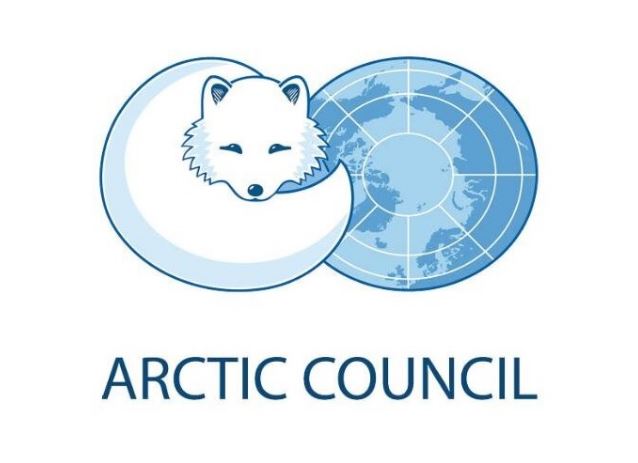Arctic nations to set target for reducing climate-warming soot pollution

Sea ice is disappearing rapidly, permafrost is thawing faster than predicted and shorelines are eroding away, but scientists say there is one simple step that can slow Arctic warming — clearing the air of black carbon, also known as soot.
Now the Arctic nations are poised to set targets for reducing black carbon, a pollutant that hurts human lungs, traps atmospheric heat and dirties the Arctic ice and snow.
The eight-nation Arctic Council, convened in Fairbanks for a high-level ministerial meeting, is expected to release those targets on Thursday, the day the United States ends its two-year chairmanship and transfers that authority to Finland.
“This is a collective goal that is being put forward to the Arctic states to reach together,” David Balton, a career diplomat and leader of the State Department’s Arctic team, said on Tuesday. The goal will establish a percentage of black carbon reductions over the next several years, “so it’s a political commitment.”
Among people concerned about Arctic climate change, black carbon is a popular target. Like greenhouse gases in the atmosphere, it traps heat and contributes to warming. It also darkens snow and ice, hastening melt and feeding into the Arctic warming cycle.
But unlike carbon dioxide, the main greenhouse gas produced by fossil fuel burning, black carbon lingers for only a short time in the atmosphere. That makes it a “short-term climate forcer” of which reductions can bring quick benefits.
The Obama administration, which was in charge of most of the U.S. Arctic Council chairmanship that started in 2015, was an enthusiastic backer of black-carbon reductions in the far north.
Then, the Arctic Council endorsed a “Framework for Action” that called for black carbon inventories and the launch of circumpolar reduction targets by 2017.
In a speech at the 2015 ministerial meeting in Iqaluit, Nunavut, the event where the United States took over the chairmanship from Canada, then-Secretary of State John Kerry said he was “particularly pleased” with the project, which “sets the state to adopt an ambitious collective goal on black carbon by the next ministerial meeting in 2017.”
A task force established in 2015 came up with targets that will be released Thursday, said Balton, who chairs the Arctic Council’s group of senior Arctic officials.
Black carbon is put into the world’s atmosphere by a variety of sources, from tiny cook stoves in Africa to huge smoke-belching coal-burning industrial plants. Wildfires are important producers, as are diesel-powered vehicles and ships.
In the Arctic, there is evidence that natural gas flaring is the dominant source of black carbon, at least on the European side. A 2013 study found that 42 percent of annual black carbon in that region was the product of flaring.
Technologies already exist to reduce black carbon, and several are expected to be affordable, even in the high-cost Arctic, Balton said. “There are some cost-effective ways to reduce emissions of this,” he said.
Cleaner-burning fuels, better engines and reductions in agricultural burning are among the steps that can reduce global emissions of black carbon.
A 2013 World Bank report recommended a suite of improvements that it said, if adopted, would slash global emissions of black carbon and methane — another air pollutant with greenhouse effects — and significantly slow Arctic warming and sea-ice melt.
The recommendations, if carried out, could slow Arctic warming by more than 1 degree Celsius by 2050 and reduce summer sea-ice loss by up to 40 percent, the World Bank report said.
The recommended emissions reductions would also benefit human health, saving around 2 million lives a year, the 2013 report said.
As of this week, the Arctic Council has made less progress on developing targets for reducing methane than those for black carbon.
It is a far more potent greenhouse gas than carbon dioxide, up to 30 times as powerful at trapping warmth. But, like black carbon, it lingers in the atmosphere for a much shorter period than does carbon dioxide, meaning that emissions reductions can pay off fairly quickly.
For environmentalists attending the Arctic Council-related events in Fairbanks, good news about methane came Wednesday from Washington, where the U.S. Senate put the brakes on a Trump administration plan that would have eased methane rules.
The Senate voted narrowly to block the proposal to overturn Obama administration rules that mandated control of methane leaks from oil and gas wells on federal lands.
Methane emissions have been rising, but the reason is not fully understood, said Simone Tilmes, a scientist with the National Center for Atmospheric Research.
Oil and gas fields that make heavy use of hydraulic fracturing could be at fault, but so could thawing permafrost and other sources, she said at a news conference held Wednesday in advance of Thursday’s Arctic Council ministerial meeting.
“There could be different reasons. It’s not necessarily the fracking,” she said.